Eustoma, cultivation and care in a pot and on the site
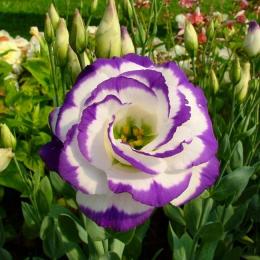
Many indoor or garden plants were discovered and brought to Europe by pioneers and sailors while exploring new lands. Subsequently, they were not only described and identified, but also received their own names and popularity among flower growers.
The flowering plant eustoma is no exception. And, although it is related to the gentians common in Europe, eustoma was brought from South America. At one time, eustoma was very popular as a garden or greenhouse plant. Currently, its popularity is returning. Let's try to find out more about the eustoma plant, its cultivation and care in culture.
Content:
- Eustoma, history of discovery and description
- Modern history of eustoma or rose of love
- Growing eustoma in pots
- Growing eustoma in the garden, popular varieties
Eustoma, history of discovery and description
Eustoma is a genus of widespread plants from the Gentian family. The family includes approximately 90 genera and more than one and a half thousand species. Representatives of the family are distributed almost everywhere. The presence of alkaloids and glycosides provided the plants with a bitter taste and formed the basis for the Russian name of the family. They are used mainly as medicinal herbs in folk medicine. But there are eustomas that are grown as ornamental garden or potted crops. The most popular when grown in culture is eustoma grandiflora or Russell's lisianthus.
It was brought from South America and grown as a cultivated plant.It grows in the wild in the southern United States, Mexico, and the Caribbean islands. Prefers a humid and very warm climate. Wild growing species have blue and purple inflorescences. The Indians not only created legends about the beautiful embodiment of the leader’s beautiful daughter in a flower, but also used it as a general tonic that gave a surge of energy. The plant was first given its official name by C. Linnaeus in 1762. Seeing similarities with various gentians, he named it Gentiana exaltata or high gentian. However, in 1806, the English botanist R.E. Salisbury isolated the American flower into a separate genus Eustoma. But the study of the plant did not end there.
Modern history of eustoma or rose of love
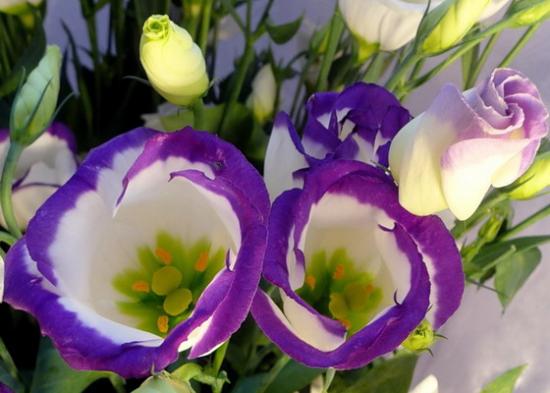
The story of identifying, describing and naming the beautiful South American flowers continued into the 19th and 20th centuries. The plant was repeatedly described as a newly discovered flower, it was classified as a different species of the genus Cynoria, or even given a new name, for example, Russell's lisianthus. The story with names ended in 1957, when the American botanist L. Shinners proposed to approve the name Eustoma grandiflora, and consider all other names as synonyms.
The flower's popularity began as a potted plant in Scotland. Beyond this country the plant was not very popular. Until about 100 years later it came to Japan. Here we fell so in love with the delicate flower that we began to work intensively on it. selection. Currently, the flower is gaining popularity thanks to the achievements of Japanese breeders, who have developed many multi-colored, simple and double, tall, suitable for cutting and short, suitable for growing in pots varieties and hybrids of eustoma.The Japanese offer seeds of about 50 beautiful varieties of eustoma. In the USA, it became popular in wedding bouquets and received another name - the rose of love. You can buy and grow it in almost any country in the world, both as a houseplant and as a garden plant.
Growing eustoma in pots
The White Rose variety and other varieties with a stem height of up to 25 cm are suitable for growing in pots. In amateur floriculture, the time for sowing eustoma seeds is mid-March. In professional greenhouses, sowing is carried out year-round with additional lighting. Any soil with neutral acidity will do, the main thing is to add sand to it and warm it thoroughly in the oven. Pour medium-sized drainage and soil into small pots. The day before sowing, moisten well. Spread the seeds on top, without touching the ground.
Video about the successful cultivation of this flower:
Cover with foil and provide bottom watering through a tray. It is not advisable to water from above - this will lead to the seeds being drawn into the soil. It is important to provide the crops with a temperature no lower than +23 and no higher than +26. At higher or lower rates, the seeds germinate worse, and at +30 they may even die. The first shoots appear after 10 days, and on the 14th day almost all of them hatch seeds. If this does not happen after three weeks, then the seeds have most likely lost their viability. For the first five days, the seedlings must be kept under film. Starting from the sixth day, the film is removed for 10 minutes. On the seventh day, the period is increased by another 10 minutes and the seedlings are kept open for 20 minutes; on the eighth, the period of exposure to air will be half an hour.
Thus, on about the 25th day, the flowers have been open for three hours and from that moment on they can be left uncovered and seedlings can be grown without film cover. As soon as the size of the seedlings reaches a height of 2-3 cm, they need picking. To do this, three to five plants are planted in separate, preferably peat or cardboard cups. The first days after picking, the eustoma is kept in a place protected from direct sun. When young plants reach a size of 10 cm, they are transplanted into pots. This must be done without destroying the earthen clod and exposing the roots, carefully transferring the eustoma into a new pot. Considering that the root system of the flower is quite modest in size, low, wide containers are suitable. Drainage material and soil also need to be disinfected in an oven.
Pots with eustoma is best placed on western or southwestern windows in conditions of diffused light and humid air. At the beginning of flowering, the plant needs weekly additions of potassium and phosphorus. In winter, it is enough to feed once a month. The flower loves moist soil, but without waterlogging and stagnation of water. During the period of mass flowering, it is necessary to carefully trim dried flowers. After three years, it is advisable to transplant the plant into a new pot - this will cause abundant flowering of eustoma. If low varieties are grown in pots, then eustoma with stem heights of up to 75-80 cm is grown either in closed greenhouses or in open ground.
Growing eustoma in the garden, popular varieties
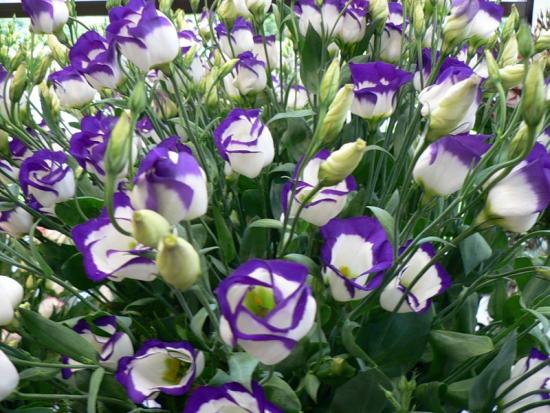
To grow eustoma in the garden, the seedling method is used. To get beautiful flowers in June, you need to sow seedlings no later than the end of January.The agricultural technology for sowing and growing eustoma for open ground is no different from growing seedlings for indoors. Planting in open ground is carried out no earlier than the surrounding air warms up to +18 and the temperature does not drop below this figure even at night.
In most regions this is the first - second ten days of June. For cultivation in open ground we can recommend the Kyota F1 series.
The variety "White Kyoto" is especially popular. It has a pleasant aroma, large flowers and lasts a long time when cut. In addition, this variety is characterized by early ripening and blooms when grown through seedlings in early July. Competitors of "White Kyoto" are the varieties "Picot Blue" and "Picot Pink", respectively, but with blue and pink single flowers. The stems of the varieties are tall, up to 90 cm, and strong. Suitable for cutting. Of the terry varieties, we can recommend “Cinderella” and “Champagne”. It is worth saying that if you transplant the eustoma into a pot in the fall and move it to a cool room for the winter, and replant it on the site in the spring, you may be able to preserve the plant in this way during the winter.
Interesting information about the vegetable garden

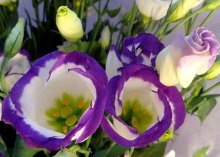
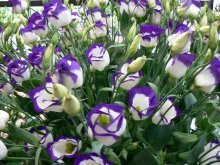
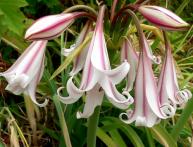





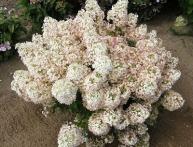
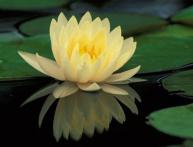
Comments
I just love this flower. We also call it field rose. I tried to plant it and grow it myself, but it didn’t even take root in the garden. For some reason he disappeared. Probably our conditions simply did not suit him.